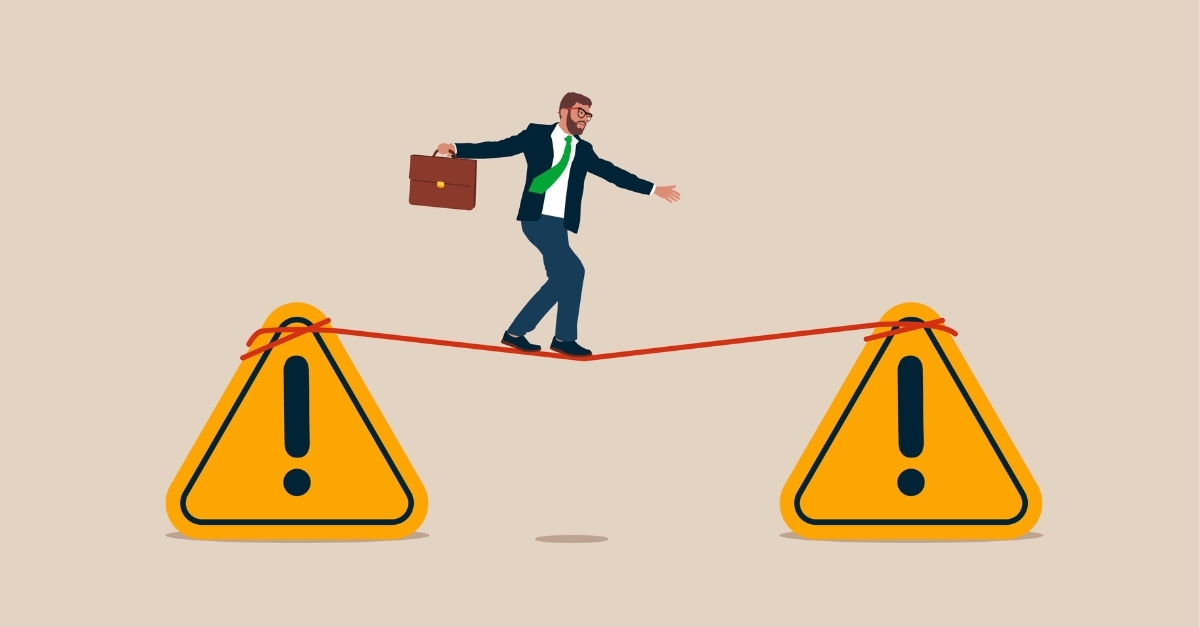The world is more unpredictable and dangerous than ever, which makes it very important for organisations to assess how prepared they are to deal with a wide range of risks.
It's not just corporations that must be aware of, and plan for, these risks. Most threats that exist today have the potential to harm public sector bodies and even the smallest private sector businesses.
The risks that you may face fall into three categories:
- Pure risks arising from the external environment, over which organisations have no control.
- External risks where some control is possible.
- Internal risks over which the business has some or total control.
Pure risks
A pure risk has only two possible outcomes -- complete loss or no loss. They cannot result in any benefit. The only way to deal with these risks is by mitigating their effects, for example through insurance or backup procedures. There is no possibility of prevention.
1. Political risk
This arises from changes in government policy or the political climate. For companies operating globally, in some countries, the political situation may suffer sudden and often violent change, which may lead to a risk of nationalisation of assets, for example. In more stable countries, a change in the political climate may have an effect on economic policy, which could impact on business.
2. Physical/environmental risk
This includes natural hazards, such as floods, fires, tornadoes and the effects of global warming, as well as things like loss of power or water supplies, or faulty machinery or equipment.
External risks
Then there are other external risks, which an organisation will have some control over. Unlike pure risks, it is possible to prevent the following risks entirely. Their crystallisations are evidence of faulty management.
3. Technological risk
Organisations that fail to spot the potential risks to their existing operations presented by new and emerging technologies may well find themselves overtaken by competition, or find their markets so radically changed that they are no longer able to compete in them.
4. External financial risk
Financial risks are very wide-ranging. They include credit risk, foreign exchange risk and interest rate risk. Most organisations will have experienced the effects of credit risk, i.e. losses arising from unpaid debts. It is insolvency that causes defaults in payments. Several high-profile insolvency cases also involve some element of fraud.
5. Legislative and compliance risk
Changes in legislation may result in restrictions to operations or sales, or increased costs of compliance. Compliance risk arises from non-compliance with laws and regulations, or failing to implement processes to adhere to new requirements (which may lead to penalties). However, it is rare that organisations don't have adequate time to prepare for new legislation.
Internal risks
Finally, internal risks arise from inside the business. They are also risks where control is possible. They include the following...
6. Strategic risk
Strategic risk involves management making bad strategic decisions, for example not effectively monitoring performance, which takes the company in the wrong direction or leads to unattainable objectives. This can seriously affect the viability of the business and, in extreme cases, lead to insolvency.
7. Operational risk
Operational risk is caused not just by poor strategic planning but by the way the business is carried on, and by flaws in its objectives, processes and systems. Operational risks include things like failing to modernise products and processes, loss of key employees, and a vulnerable supply chain.
8. Governance risk
Risks to the organisation can be created by weak corporate governance. This includes problems arising from inappropriate board structures, poor communications within the business and no support for a strong internal control environment. Both operational and strategic risk can be exacerbated by poor corporate governance.
9. Internal financial risk
Internal financial risks include those that occur both because of the structure and financing of the business, and the operation of financial systems. Financial risks include inadequate finance for future operations, high levels of gearing at a time of rising interest rates and competition, and internal fraud.
10. IT risk
IT risks come in various shapes and sizes -- the risks of malware, denial of service attacks and ransomware are well-known. However, the scope of IT risks is wider than external hacking. There are data management, third-party, IT program and cyber security risks, for example.
Other risks
Of course, there are many other risks, such as:
- Market risk (caused by unexpected changes in the market)
- Economic risk (e.g. fluctuations in interest rate)
- Health and safety risk (e.g. an employee having an accident)
- Crime risk (such as fraud and theft)
It is down to your organisation to assess the most important areas!

You need to sign in or register before you can add a contribution.